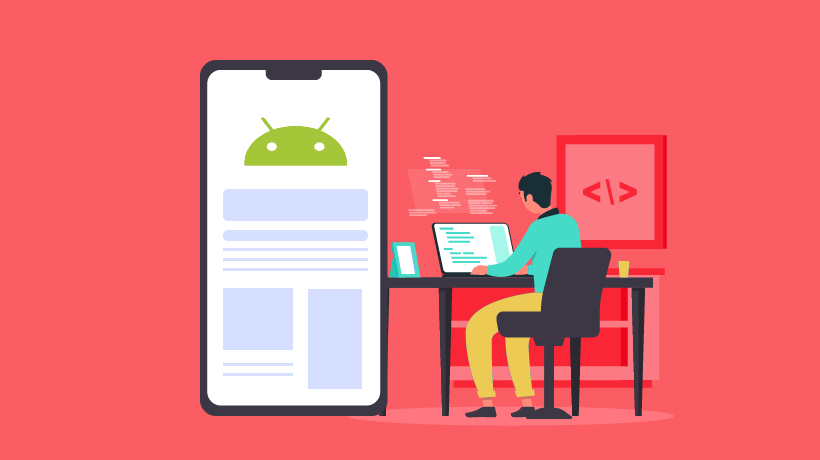Mobile devices have a limited amount of hardware and software resources, including battery, processing power, RAM and storage, internet connectivity, etc. When it comes to Android app development, a mobile app is considered to be successful if it can run across the increasingly diverse range of Android devices and platforms without any issues. One most significant characteristic that marks the success story of your mobile application is its size. If the Android APK size is too large, your potential users can have troubles during the app installation and utilization on their device. It could be due to the limited memory, slow internet connection, frequent lagging and repeatedly crashing, or any other plausible reasons.
Today’s tech-savvy consumers don’t want to download those large-sized storage-hogger apps that cause downright nuisance and compromise the quality, navigability, and other critical functions of an app.
Mobile game apps, in particular, are swelling rapidly in size because app bundles involve various SDKs and all the game assets need to be optimized for a full range of architectures and screen densities, which can quickly lead to a bloated APK. That’s why it’s critical to make certain that the app bundles must stay as small as possible if you aspire to target different android-powered devices and billions of customers with your app. That will also drastically improve your ability to prevent users from uninstalling your mobile app when they receive an “insufficient storage” or “not enough space” notifications on their device.
Some of the most critical concerns related to the large app size are:
- App Lagging and Hogging
- High data consumption
- Reduced App Downloads
- Irregular Functionalities
- Bigger Storage Coverage Requirement
- Poor User Experience
- Low Conversion Rates
Here are some simple, quick tricks and tips that will help you reduce the size of your mobile app/APK during the development cycle. So without any further ado, let’s get down to business.
#1: Analyze the APK Using APK Analyzer
The installation of the app and how much disk space it consumes completely relies on the size of the APK. So to reduce app size, it’s significant to get clear, actionable insights into the APK’s structure. APK Analyser, an effective tool designed and provided by Android Studio, allows you to breakdown the complex, multifold composition of the APK and take a look at different files and directories in your .apk file. With this tool, you can analyze your Android Resources, DEX files, and other assets, identify which component is using up the maximum amount of space, as well as compare two different APKs.
#2: Get Ready to Optimize the App
Once you breakdown the APK and discover the aspects contributing to its increased size, starting from assemblies to libraries to byte code, optimize the APK by removing any unused resources, resizing larger components, and making some easy yet constructive changes.
#3: Remove any Unused Android Resources and Assets
Sometimes, a significant percentage of the resources remain unused during the android app development cycle. However, you will be disbursed for the entirety of assets that you deploy, even if much of them aren’t used within the app. This arrangement is rather expensive for not only mobile app development companies but also the potential customers who will be installing their app/APK file. There are numerous static program analysis tools, such as Lint, Proguard, and other android resources removers, available in the market that will enable you to deliberately squash out all the idle resources, including strings, drawables, strings, and colors, gathered in your android app development project.
#4: Reuse the Resources
Rather than creating and including a separate asset for multiple variants of a particular discreet resource, consider reusing the same set of resources designed and deployed earlier, customizing them as required at runtime.
#5: Eliminate the Dead Code
The APK file size is directly proportional to the memory and power consumption and the load speed as well as the performance of your app. As such, if your APK file consists of any inoperative or dead code, it will not only add to the bulk but also waste the storage space and computation time.
While the dead code typically doesn’t compromise the functionality of the app and has no significant bear on its behavior, keeping thousands of lines of wasteful code in your source code costs money, time, and maintenance headaches. To remove this inept code, you can either review the wholesome code manually or use an automated dead code detection tool. Taking it out not only shrinks the size of the app and improves the quality of codebase but also reduces the running time and maintenance costs.
#6: Optimize the Images
It’s measured that the images are accountable for the lion’s share of the entire app’s size because they might be present in both the raw package and the asset catalog. Much like the optimization of resources and codes, image optimization is necessary to reduce the size of your APK file and manifest a healthy app, overall. For this process, convert all the PNG, JPEG or BMP images and files to WebP format. Due to its excellent compression capability, WebP format takes up less storage space while preserving the same original image quality as before. More to that, the said format is natively supported in Android, so there’s no need to change any layouts when loading WebP images in ImageView.

